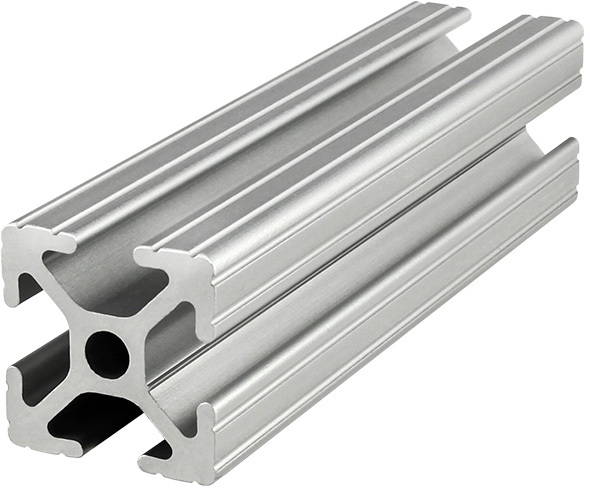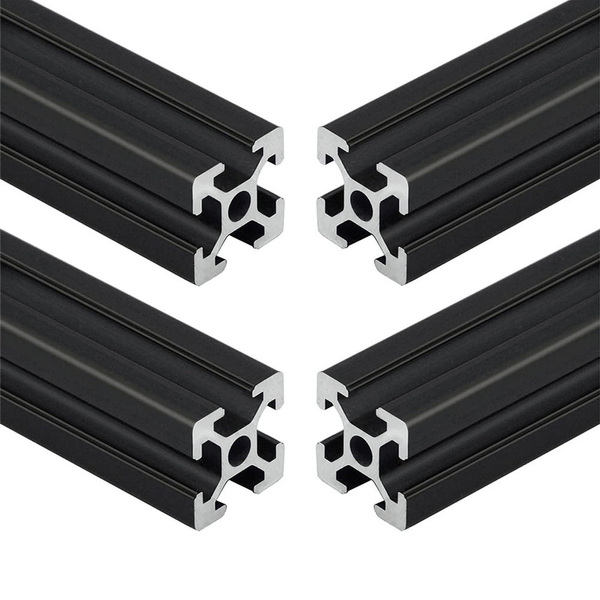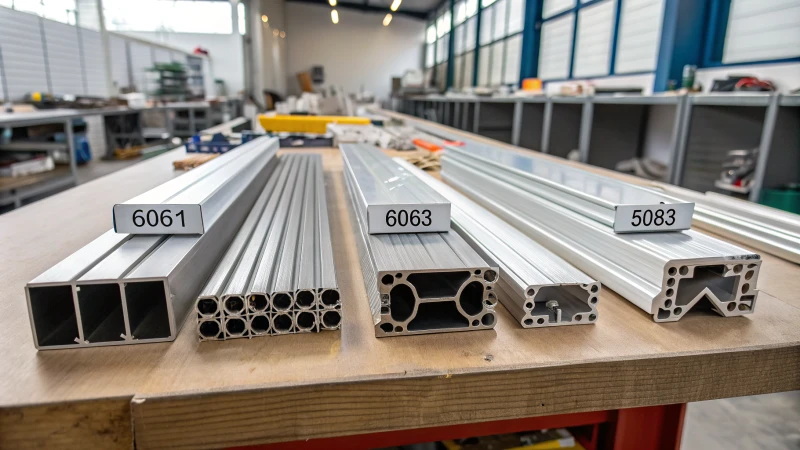Content Menu
● Understanding Aluminum Extrusion Costs
● Pricing Structures
● Average Price Ranges
● Factors Affecting Cost Estimation
● Strategies for Cost Optimization
● Applications of Aluminum Extrusion
● Environmental Considerations
● Future Trends in Aluminum Extrusion Pricing
● Conclusion
● Frequently Asked Questions (FAQs)
>> 1. What factors influence the cost of aluminum extrusion?
>> 2. How much does an aluminum extrusion die cost?
>> 3. What is the average cost per pound for common aluminum profiles?
>> 4. Can I reduce my aluminum extrusion costs?
>> 5. How do production volumes affect pricing?
Aluminum extrusion is a crucial manufacturing process used in various industries, including construction, automotive, and consumer goods. It involves forcing aluminum through a die to create specific shapes or profiles. Understanding the average price for aluminum extrusion per foot is essential for businesses and individuals looking to budget their projects effectively. This article will explore the various factors influencing aluminum extrusion costs, provide insights into pricing structures, and offer tips for optimizing expenses.

Understanding Aluminum Extrusion Costs
The cost of aluminum extrusion can vary significantly based on several key factors:
- Material Costs: The primary driver of aluminum extrusion prices is the cost of raw aluminum. Prices fluctuate based on global market conditions, supply and demand, and geopolitical factors. As of late 2024, prices for raw aluminum have ranged from $2,000 to $3,000 per metric ton.
- Die and Tooling Costs: Creating the dies necessary for shaping aluminum can be expensive. For standard profiles, die costs typically range from $500 to $1,000. However, complex or custom profiles may require more sophisticated tooling, leading to costs as high as $2,000 or more.
- Profile Complexity: The design complexity of the aluminum profile directly affects production costs. Simple shapes are generally less expensive to produce than intricate designs that may require multiple extrusion passes or additional machining.
- Production Volume: The quantity of extrusions ordered plays a significant role in determining the cost per unit. Larger production runs often lead to lower per-unit costs due to economies of scale.
- Finishing Processes: After extrusion, many profiles undergo finishing processes such as anodizing, powder coating, or machining. These additional steps enhance the appearance and durability of the product but also add to the overall cost.
Pricing Structures
Aluminum extrusion costs can be expressed in two primary ways:
1. Price per Pound: For standard profiles and larger orders, pricing is often calculated based on weight. Common profiles typically range from $3 to $5 per pound. Custom or specialized extrusions can cost between $5 and $10 per pound or more.
2. Price per Foot: For smaller orders or when purchasing from distributors, pricing is frequently quoted per foot. This can range from a few dollars per foot for simple profiles to $20 or more for complex designs.
Average Price Ranges
To provide a clearer picture of what customers might expect when budgeting for aluminum extrusion projects:
- Common Profiles: Generally priced between $3 and $5 per pound.
- Custom Profiles: Prices can range from $5 to $10 per pound depending on complexity.
- Per Foot Pricing: Simple extrusions may cost around $2 to $10 per foot, while intricate designs could exceed $20 per foot.
Factors Affecting Cost Estimation
When estimating costs for aluminum extrusion projects, consider the following:
- Alloy Selection: Different aluminum alloys have varying costs associated with them. Common alloys like 6061 and 6063 are typically less expensive than specialized alloys designed for specific applications.
- Order Minimums: Many manufacturers have minimum order requirements that can affect overall pricing. Smaller orders may incur higher costs due to setup fees being spread over fewer units.
- Lead Time: Urgent orders may attract additional charges due to expedited processing requirements.

Strategies for Cost Optimization
To manage and potentially reduce aluminum extrusion costs:
- Optimize Design: Collaborate with extrusion experts to refine your design. Minor adjustments in wall thickness or profile geometry can lead to significant savings by reducing material usage and production complexity.
- Bulk Orders: Whenever possible, place larger orders to benefit from lower per-unit pricing through economies of scale.
- Evaluate Finishing Options: Carefully consider which finishing processes are necessary for your application. Sometimes simpler finishes can meet your needs at a lower cost.
Applications of Aluminum Extrusion
Aluminum extrusions are widely used across multiple industries due to their versatility and lightweight properties. Here are some common applications:
- Construction Industry: Aluminum extrusions are used in window frames, door frames, curtain walls, and structural components due to their strength and resistance to corrosion.
- Automotive Sector: Lightweight aluminum extrusions contribute significantly to fuel efficiency in vehicles by reducing overall weight while maintaining structural integrity.
- Consumer Goods: Many household items such as furniture frames, appliances, and electronics utilize aluminum extrusions for their durability and aesthetic appeal.
- Aerospace Applications: The aerospace industry relies heavily on aluminum extrusions for components that require high strength-to-weight ratios while ensuring performance under extreme conditions.
Environmental Considerations
The production and recycling of aluminum have significant environmental implications. Understanding these aspects can further influence decision-making regarding aluminum extrusion projects:
- Recyclability: Aluminum is highly recyclable without losing its properties. This makes it an environmentally friendly choice compared to other materials like plastics or steel.
- Energy Efficiency: While the initial production of aluminum requires substantial energy input, recycling consumes only about 5% of the energy needed for primary production. This highlights the importance of using recycled materials in new projects.
- Sustainability Practices: Many manufacturers are adopting sustainable practices in their operations by utilizing renewable energy sources and minimizing waste during production processes.
Future Trends in Aluminum Extrusion Pricing
As industries evolve and new technologies emerge, several trends may influence future pricing structures in aluminum extrusion:
- Increased Demand for Lightweight Materials: As industries seek lighter materials for improved efficiency—especially in transportation—demand for aluminum extrusions is likely to rise, potentially impacting prices upward.
- Technological Advancements: Innovations in manufacturing processes may lead to more efficient production methods that could help lower costs over time.
- Global Market Dynamics: Fluctuations in global markets due to economic conditions or trade policies will continue to play a critical role in determining raw material prices affecting overall extrusion costs.
Conclusion
In summary, the average price for aluminum extrusion varies widely based on several factors including material costs, die expenses, profile complexity, production volume, and finishing requirements. Understanding these elements allows businesses and individuals to better estimate their budgets and make informed decisions regarding their projects involving aluminum extrusions.
By working closely with experienced manufacturers and optimizing design choices, it is possible to achieve high-quality results without exceeding budget constraints. Additionally, staying informed about market trends and environmental considerations will further enhance decision-making processes related to aluminum extrusion projects.

Frequently Asked Questions (FAQs)
1. What factors influence the cost of aluminum extrusion?
The key factors include material costs, die and tooling expenses, profile complexity, production volume, and finishing processes.
2. How much does an aluminum extrusion die cost?
Die costs typically range from $500 to $1,000 for standard profiles but can go up to $2,000 or more for complex custom profiles.
3. What is the average cost per pound for common aluminum profiles?
Common profiles generally cost between $3 and $5 per pound.
4. Can I reduce my aluminum extrusion costs?
Yes, by optimizing designs, placing bulk orders, and carefully selecting finishing options you can manage and potentially reduce costs effectively.
5. How do production volumes affect pricing?
Larger production runs typically result in lower per-unit costs due to economies of scale since setup costs are distributed over more units produced.






















